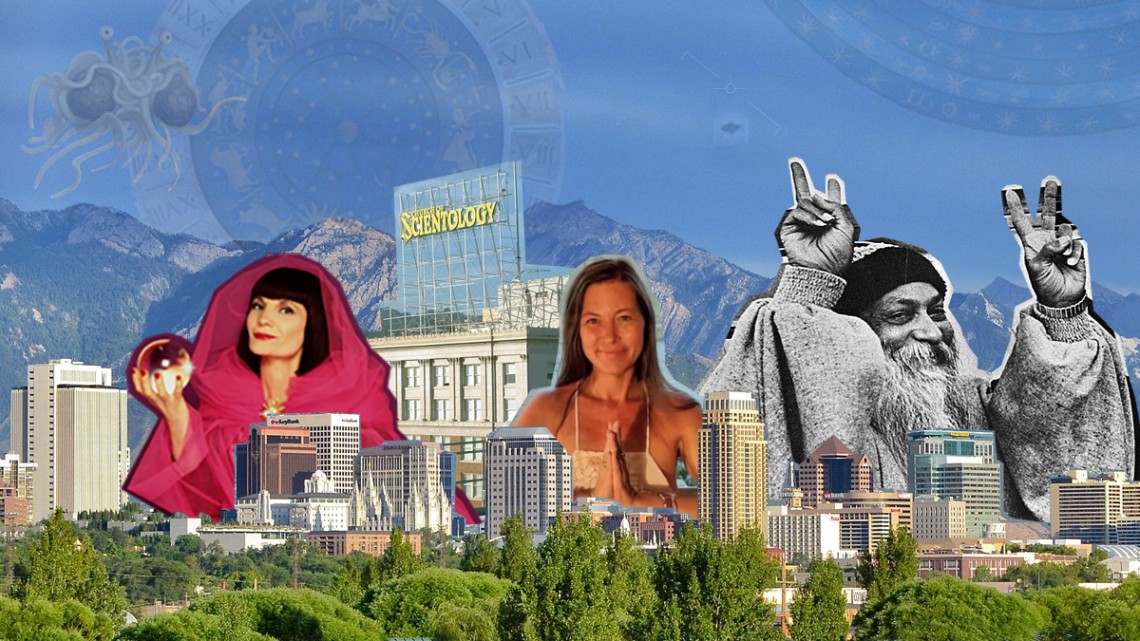What might Max Weber say about the social media influencers of the Mormon Church? Erin Clark has some ideas.

It is undoubtable that the internet as it currently exists digitally replicates several conventions of the so-called empirical ‘real world’, dictating that, as Cowan details, “there is very little in the real world that is not electronically reproduced online.” In the early establishment of the religious Internet, it was concluded that the migration of religion into cyberspace occurred out of a necessity to evolve in accordance with the rapidly expanding and developing modern world. As a future looms which is definitively digital, the technological literacy of everyday life poses a quandary for religious movements in ensuring a framework which allows them to disseminate effectively into the 21st century. It may be easy to assume that those defined by Wallis as “world-accommodating new religious movements” are perhaps best equipped for future relevance, yet is this wholly true? With reference to The Church of Jesus Christ of Latter-day Saints (LDS), I aim here to consider to what extent Weber’s “charismatic leader” has been reinterpreted digitally through the Mormon social media influencer (SMI).
The online LDS Church
The combination of the Church of Jesus Christ of Latter-day Saints (LDS) being a world-affirming new religious movement (NRM); being a networked religion allowing the sharing of religious knowledge; having the need to edit their image through search engine optimisation to avoid negative portrayal; and having the need to evolve in accordance with processes of globalisation, all explain why Mormon dissemination has become digitised in the 21stcentury.
This digitisation has unquestionably been propelled by the COVID-19 pandemic, wherein limits were placed on physical proselytising due to global restrictions as enforced by health organisations. The pandemic saw thousands of globally dispersed missionaries returning to their home countries, and the Church relying on “the flexibility and social media savvy of young missionaries” in order to effectively administer the Mormon message. Seeing the success of this method, the Church now continues to proselytise online due to the ongoing necessity of continuing missionary work, while also considering perpetual global barriers.
The Latter-day Influencer
In a way that mirrors the conventional establishment of religious movements, the notion of ‘influence’ very literally and directly translates into the role of the modern religious ‘influencer’. Producing faith-centred content for audiences provides both a platform for religious belief, and a significant digital stream of income through the sponsored promotions. To use religious analogy, when considering the hierarchy of audience member to influencer, the audience member is the preached-to and the influencer is the preacher. Through audiences finding common ground with the influencers they follow through religious similarities, religious SMIs surpass social media influence and constitute a “grassroots vanguard of Latter-day Saint evangelists.”
LDIs (Latter-day Influencers) form a twisted ecosystem of faith-led influencers, with the aim of accumulating followers for both themselves and for God. By adhering to a proven commercially and financially viable career in the 21st century, the religious SMI can tap into the $16.4 billion industry, while also benefiting from data algorithms which personalise an individual’s social media usage, perpetuating online religious communities, as these SMIs are optimised and recommended to people who share their own faiths. The range of Latter-day SMIs spans from beauty influencers, musicians, fitness influencers, and general family and lifestyle vloggers – all of whom make faith-based content with varying levels of explicitness.
Are Latter-day Influencers the new ‘charismatic leaders’?
Symbolising a group’s identity, Weber’s charismatic leadership refers to figures of authority who are set apart and treated as endowed with specifically exceptional powers or qualities, regarded as exemplary, and on the basis of these criteria the individual concerned is treated as a leader. Marx, Weber, Freud and Berger all popularised the notion that humans create gods rather than the reverse – which is increasingly applicable in the sense of power disparities relevant to this study. By being led by charismatic individuals, movements can capitalise on the number of incoming members via conversion which is made easier through movements being captained by such people.
The charismatic nature of the movement permeates many aspects of the tradition itself, with the Church’s missionary work exemplifying how the tradition implements notions of its charismatic bureaucracy in day-to-day member conduct. To achieve conversion, Mormonism deploys tactics which encourage people to join the Church – namely in offering a system in possession of a special and elusive authoritative quality. This charismatic leadership translates into the online dissemination of Mormonism. It is surely logical, to conclude that the charisma and marketable personality of an individual or a religious institution affects the amount of influence that they have over their followers, demonstrating – in definition alone – just how similar the notions of the charismatic religious leader and the modern social media influencer are.
While the LDI may not fully replace the initial charismatic originator, the existence of charismatic LDIs offers an insight into how religious dissemination can be recontextualised in the 21st century, as well as how religious identities can be curated, and religious online communities can be formed. While the LDI does not conform directly to the notion of the archetypally charismatic religious originator, they bear enough similarity to mirror them and offer a modern example of the hierarchical, globalised, and networked religion that is the modern LDS Church.
Because it is influenced by processes of both globalisation and the digitisation of religious dissemination, charting the course of the LDS religion online is an increasingly self-reflexive process. In the early integration of the internet, its unknown capabilities presented an easy case for cultic blame, this study attempts to introduce the potency of negative generalisation, through both the generalisation of ‘cults’, and the internet being inherently negative. Yet conversely, a case can be made that modern religion online presents both the “perils and promise” and the “wonders and significance of cyberspace.”
In a modern context – one that moves away from cultic ‘brainwashing’ discourse – a case is presented in which a modern viable career option, that of the LDI, is being fully capitalised upon. While this position bears similarities to the established charismatic religious leader, the concept does not carry near as negative a reception due to the migration away from cultic discourse. Reflective of modern networked religion, the internet is now viewed as an “environment in which things happen” instead of an external concept.
So, how and why, in the 21st century, “do the servants of God [..] go forth”? As shown by this study, modern Mormons move forward as members of a movement that is cognisant of its own potential through online dissemination and strategic deployment of LDIs. This exemplifies both the Church’s status as a world-affirming new religious movement, and the recontextualisation of religious belief as it is expressed in a modern context that is perpetually socio-politically charged. Additionally, I recognise that this study will soon be temporally flawed due to the fields it addresses – yet academics should pay heightened attention to the sphere of religious social media, in itself a “context which brings about new politics corresponding to space-worlds and time-worlds that have never before existed in human history“.





